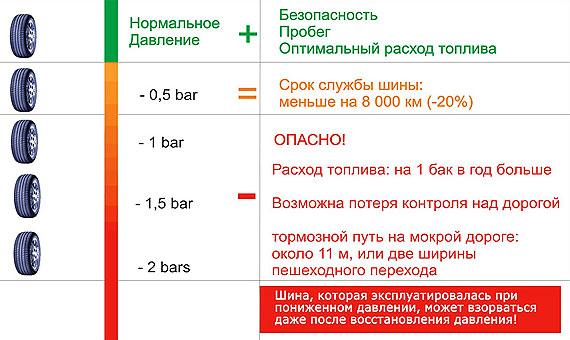
Tire pressure. The driver should be aware of this in winter
 In winter, check your tire pressure more often. The reason is that it falls faster due to temperature changes, which, combined with more difficult road conditions, can be dangerous. In Poland, almost 60% of drivers check tire pressure too rarely.
In winter, check your tire pressure more often. The reason is that it falls faster due to temperature changes, which, combined with more difficult road conditions, can be dangerous. In Poland, almost 60% of drivers check tire pressure too rarely.
Proper tire pressure is essential for driving safety. It is from the wheel that the sensors collect information that guarantees proper handling, the operation of traction control systems and ABS. The amount of air in tires determines tire grip, braking distance, fuel consumption, as well as tire life and the risk of tire damage. So how often do you need to check the pressure and what should be its value in winter?
Pressure drops at lower temperature
A decrease in ambient temperature causes changes in tire pressure due to the phenomenon of thermal expansion. The drop is approximately 0,1 bar for every 10°C. With a recommended tire pressure of 2 bar, supplemented with a temperature of 20°C, this value will be about 0,3 bar lower at minus 10°C and about 0,4 bar lower at minus 20°C. In severe frosts, tire pressure drops 20% below the correct value. Such a low level of air in the wheels significantly reduces the driving performance of the car.
The editors recommend:
Driver attention. Even a fine of PLN 4200 for a slight delay
Entrance fee to the city center. Even 30 PLN
An expensive trap many drivers fall into
Regular control
Given the winter temperature fluctuations, experts recommend checking the air level in the wheels even every week, while in other seasons a monthly check is sufficient. Measurement is best done on a cold tire - preferably in the morning or not earlier than 2 hours after driving, or after driving no more than 2 km. Check the air pressure before further trips and raise it accordingly if you plan to travel with a heavier load, such as an extra ski boot. - Unfortunately, the recommendations on the regularity and frequency of checking the air in passenger tires are rarely followed in practice. Drivers most often reach for the compressor when something bothers them. Most users do not know the correct values for their car. When checking tire pressure, the spare tire is often forgotten,” says expert Artur Obusny from ITR CEE, Yokohama's tire distributor in Poland.
See also: Skoda Octavia in our test
Are we stocking up for the winter?
It is worth remembering that there is no universal pressure value for all cars. The pressure level is determined individually by the vehicle manufacturer and adapted to a given vehicle model or engine version. Information about the recommended "homologated" pressure can be found in the vehicle's log book and, depending on the type of vehicle, in the glove compartment, on the fuel filler flap or on the driver's door.
In winter, with frequently changing temperatures, it is not always possible to adapt the pressure to the current weather. Therefore, experts recommend increasing the pressure by 0,2 bar at the onset of low temperatures that persist for several days. The pressure must be brought to the approved value when the air temperature rises again. Too high pressure is also dangerous and can damage the tire.
Low pressure - dangerous on the road
The correct level of air in a tire is primarily concerned with driving safety, as well as fuel economy and tire life. If the pressure is too low, the front of the tire does not fully adhere to the road, resulting in poor grip and handling, slower and less precise vehicle responses, and braking a few meters longer. Too little air increases the risk of hydroplaning - a situation where water on the road gets under the surface of the tire, causing loss of contact with the road and skidding. Low pressure increases deflection temperature and resistance to lupus erythematosus and therefore results in greater fuel consumption. Reducing the pressure by 0,5 bar increases fuel consumption by up to 5%. In addition, the tread wears faster at the edges and it is easier to damage the inner parts of the tire or rim. A factor that may indicate low tire pressure is slight steering vibrations. When they appear, you should absolutely check the pressure level using a compressor at gas stations.